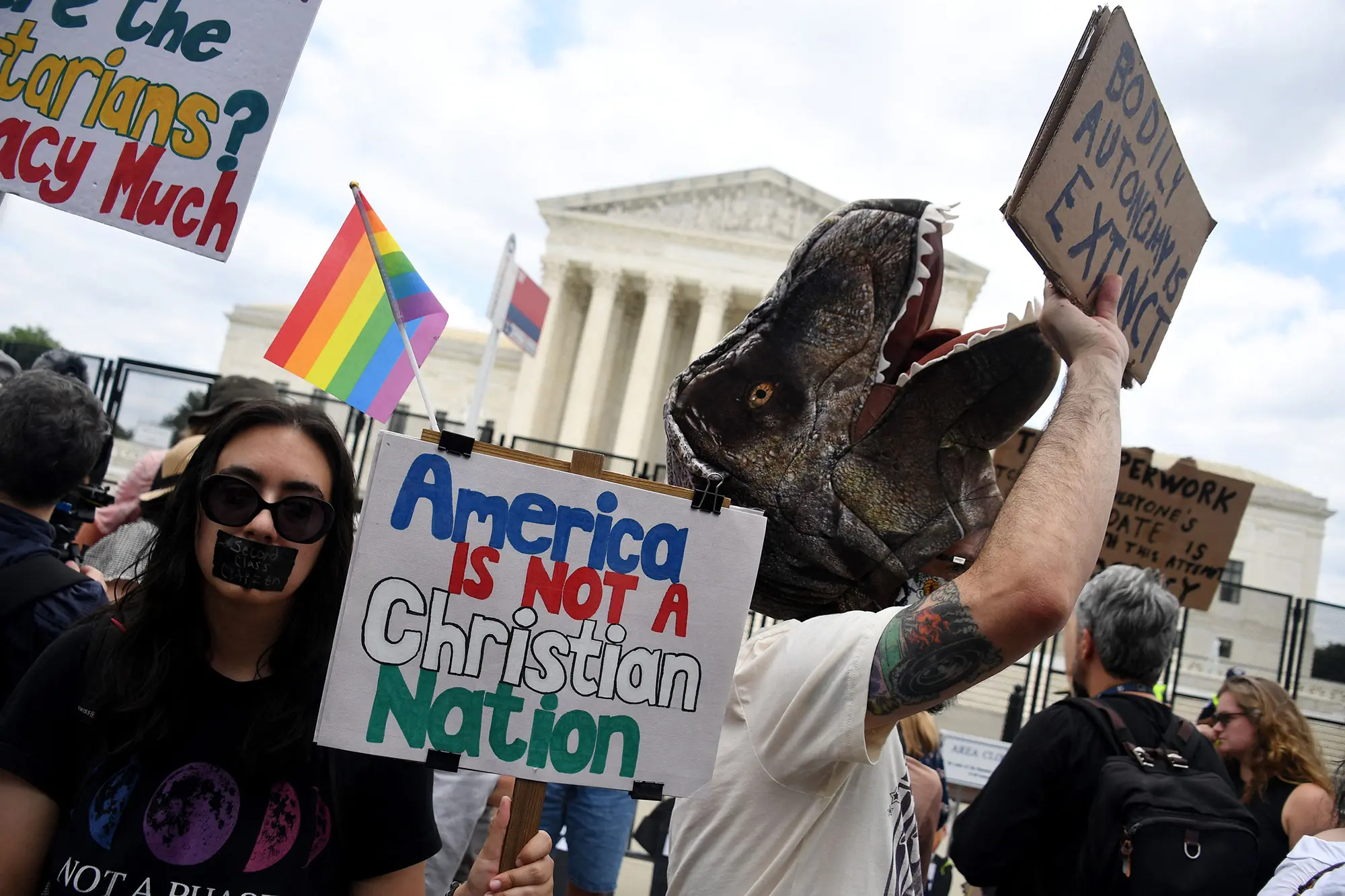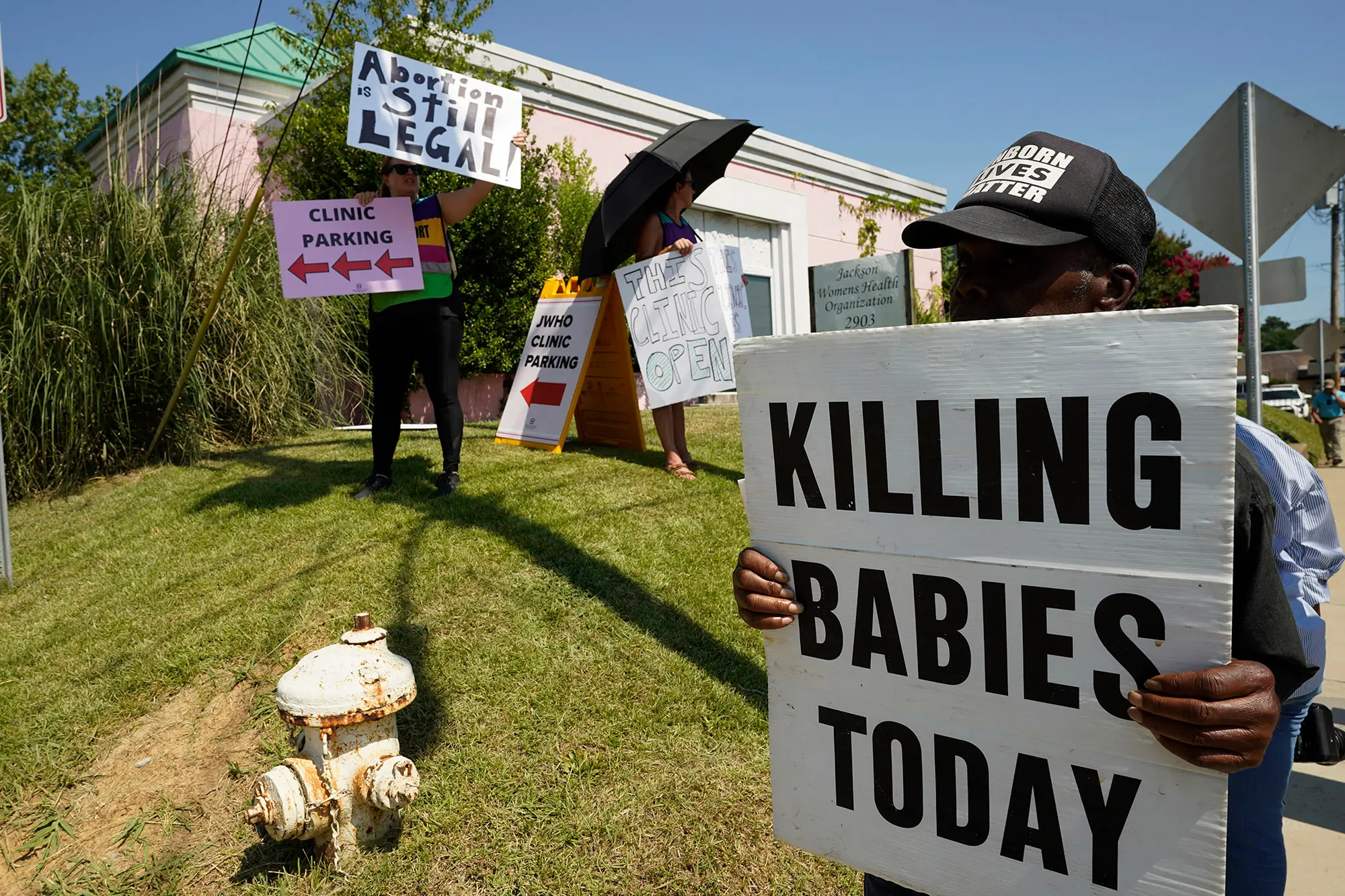On Friday, the Supreme Court overturned the landmark Roe v. Wade decision, ending nearly 50 years of federal abortion rights in the United States. This decision was confirmed by the leak of a draft opinion last month.
A California man was arrested on June 8 for allegedly plotting to kill Supreme Court Justice Brent Kavanaugh because he was enraged by a leaked draft of the Supreme Court Abortion ruling issue. In response to questions about Friday’s decision, here are some of the answers:
When Roe v. Wade is overturned, what does that imply?
Roe v. Wade established a constitutional right to abortion under the 14th Amendment’s “due process” clause, which the court previously stated included a right to privacy.
On Friday, the Supreme Court decided that the right to abortion no longer exists at the federal level and that the states should instead resolve the issue of abortion laws.

Which states will outlaw abortions?
In the event of Roe v. Wade’s overturn, 26 states, mainly in the southern and central parts of the country, were expected to ban or restrict abortions.
In total, 22 countries have previously prohibited abortions or have measures to do so if necessary. Those states are Alabama, Arizona, Arkansas, Georgia, Idaho, Iowa, Kentucky, Louisiana, Michigan, Mississippi, Missouri, North Dakota, Ohio, Oklahoma, Texas, and the District of Columbia.
According to research by the Guttmacher Institute, which advocates for abortion rights, four other states—Florida, Indiana, Montana, and Nebraska—are also expected to take action as soon as possible.
What are “trigger laws,” and how do they differ from other types of laws
So-called “trigger laws” are legal measures that would take effect immediately or with minimal effort if Roe v. Wade is overturned.
Before Friday’s ruling, 13 states enacted trigger laws: Arkansas, Idaho; Kentucky; Louisiana; Mississippi; Missouri; North Dakota. Oklahoma; South Dakota. Tennessee, Texas, Utah, and Wyoming.
Since when has the Supreme Court changed its mind?
The American legal system is built on the principle of precedent, which dictates that judges apply previous decisions when making new decisions.
However, a chart on the “Constitution Annotated” website shows that the Supreme Court has overturned 233 of its decisions dating back to 1810.
Following legal precedent, also known as “stare decisis,” is “a principle of policy and not a mechanical formula of adherence to a recent decision,” wrote former Chief Justice William Rehnquist in a 1991 opinion.
In his 2006 confirmation hearing, Justice Samuel Alito said, “I would not get into categorizing precedents as super precedents or super-duper precedents.”

Did Roe v. Wade end the deaths of women due to abortion?
As soon as Politico published Alito’s draft opinion, the progressive group Occupy Democrats posted a photo of a lawn sign that said, “Roe wasn’t the beginning of women having abortions — Roe was the end of women dying from abortions.”
However, Politifact had already debunked the message on the viral image after Occupy Democrats posted it in October.
Even before Roe v. Wade was decided in 1973, abortion-related deaths of women decreased from thousands in the 1930s to just 63 in 1972, 24 of which were legal abortions and 39 of which were illegal abortions, according to studies cited by Politifact.
Abortion-related deaths among women in the United States have decreased from 47 in 1973 to two between 2011 and 2017, according to data released by the US Centers for Disease Control and Prevention in 2020.
“Fact-checkers at Politifact have rated this as false,” Occupy Democrats noted in their May 9 post and included a link to their Oct. 13 report.
